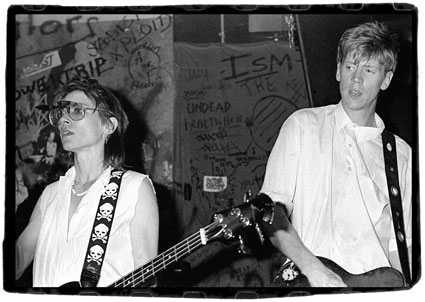
A year ago the Museum of Modern Art’s media galleries hosted “Looking at Music,” an exhibition of process-based work from the 1960s and 1970s that included music videos by pop icons like David Bowie and The Beatles (as well as cult favorites Captain Beefheart and Devo) amid works by Nam June Paik, Joan Jonas, and other avant-garde heroes. Caitlin Jones expanded on the inclusions and their mutual connections in a review on Rhizome; I also wrote about how it traced two paths in process art, which were exemplified by the music of John Cage and Steve Reich. Whatever a viewer brought to the show, it’s safe to say that everyone felt a thrill from the incongruity of watching Bowie’s Space Oddity in MoMA’s white boxes. The approach helped tear Cage, Paik, and their cohorts out of the textbook, and demonstrated that while ideas germinated in strongholds of the creative intellect like Darmstadt or E.A.T.’s “9 Evenings: Theatre & Engineering,” art did not exist in a vacuum. With “Looking at Music,” curator Barbara London set an agenda continued in an essay published in the March 2009 issue of Artforum, making a case for the study of music video in terms of process art in the late twentieth century.

Now “Looking at Music: Side 2,” on view through November 30, offers the flip side as it takes the exploration of the topic into the late 1970s and early ‘80s. If art-world favorites set the tone in last year’s exhibition, “Side 2” is dominated by album covers and concert posters. A sprawling mural of work by rock’n’roll photographer Bob Gruen overlooks a monitor showing a grainy video he made in 1976 at Max’s Kansas City, the legendary artists’ hangout. Extensive footage from a line-up of experimental acts playing at a Soho loft presents a node where artists and musicians came together rather than a work itself. A campy simulation of S&M; in a Beth B video and pictures of performative punk dress establish the music scene as the source of the irreverent attitudes toward gender found in a diptych of portraits of Cindy Sherman as herself and Richard Prince as Cindy Sherman, as well as Laurie Simmons’s self-portraits wearing bondage gear in a refrigerator. Like its predecessor, “Looking at Music: Side 2” encourages buffs of recent art history to take another look without academic blinders. But its more prominent populist edge seems like an attempt to give artists of postmodernity street cred in the eyes of the Richard Hell and Blondie fans amid MoMA’s public.